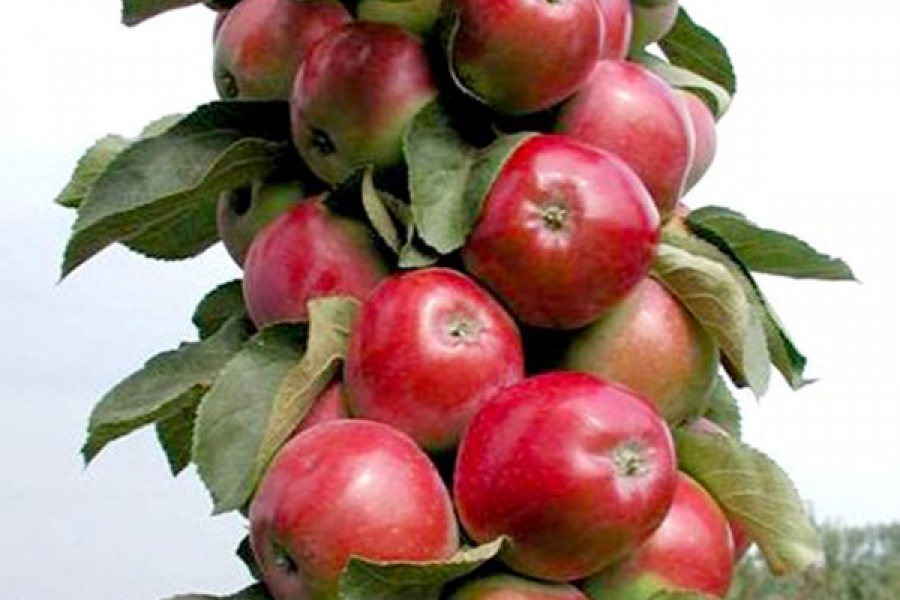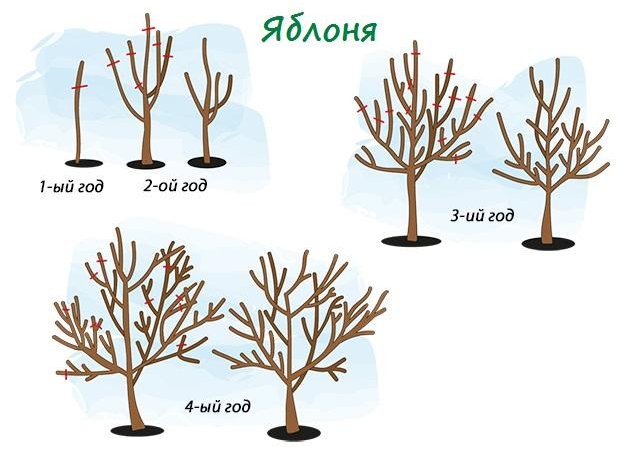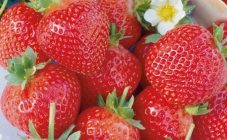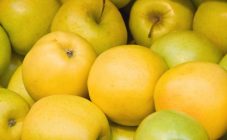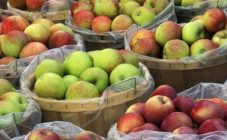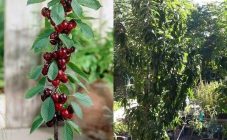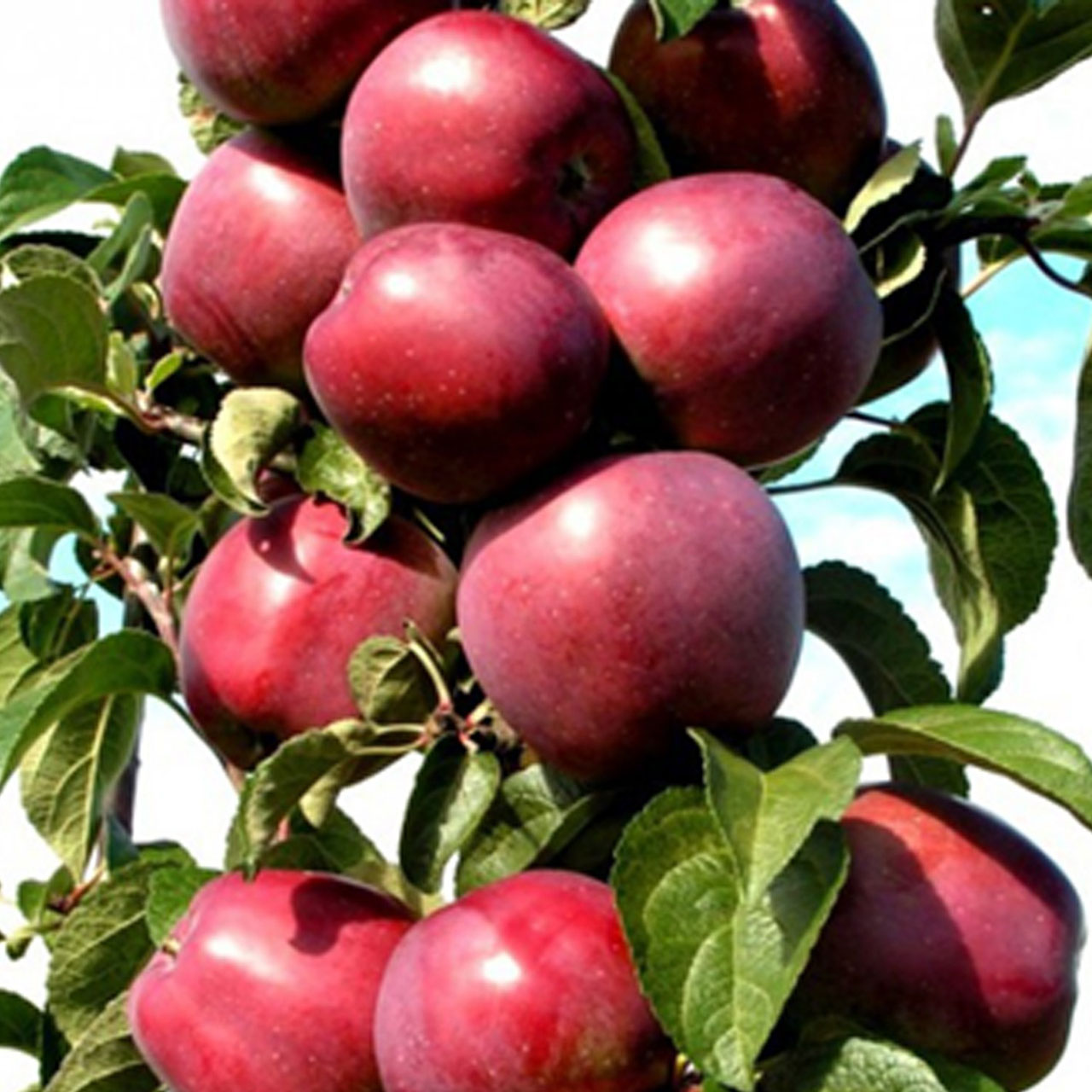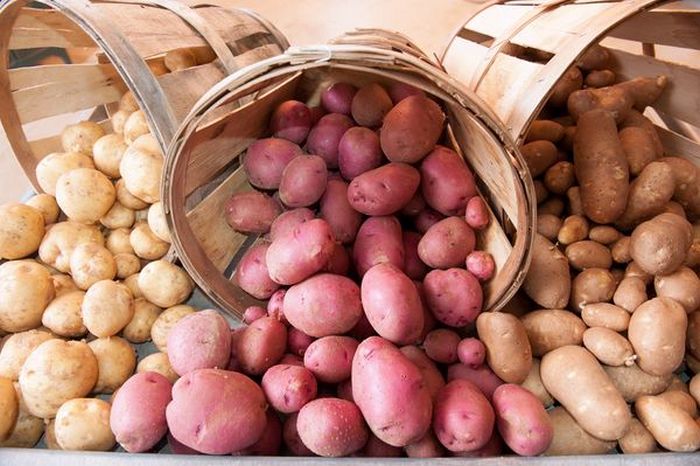Content:
Columnar apple trees continue to win the hearts of summer residents. These compact ornamental trees will brighten up any garden. Despite their small size, they give a high and consistent yield. It is convenient to remove fruits from a miniature apple tree - no need to use a ladder. This type of culture is planted throughout Russia and in other countries.
However, there are varieties for each geographic region. For the Urals, where winters are usually frosty and long, and spring, summer, autumn are short and cool, certain groups of apple trees are provided. Columnar apple trees for the Urals are not afraid of temperature changes, they are not afraid of frost.
Columnar Culture Information
The columnar apple tree is a small fruit tree with no side branches. The shoots on which the apples are formed are very short. The feeling is that the fruits are growing right on the trunk. Because of this, apples are easy to spot and pick. The tree itself does not stretch above 2-3.5 meters. Colonovids are dwarf (2 meters), semi-dwarf (3 meters), vigorous (3.5 meters).
An excellent solution to plant a columnar culture along garden paths or form a living fence from it. Due to its diminutive size, kolonovidki can be grown even in a small garden.
At the heart of the creation of columnar cultures is the lack of hormones responsible for growth. This factor provoked the plant's need to leave behind a large offspring. Therefore, the budding of the buds, on which fruits appear, is maximum in colonovids. Moreover, the first harvest can be obtained within a couple of years after the planting was carried out. Common spreading apple trees begin to bear fruit after 5-7 years. Columnar trees produce crops every year, unlike normal trees.
However, the main disadvantage of columnar apple trees is their short productive life. After 10-15 years, apple trees stop forming fruits. In this case, the trees do not die. They grow without fruiting for another 30-35 years. In addition, a kolonovidka sapling costs several times more than an ordinary apple tree sapling.
Another disadvantage of this variety of fruit trees is in the surface roots. The root system is not too developed and hardly holds the aerial part of the plant. Also, the roots do a poor job of feeding the tree. Because of this, miniature trees need support, constant watering and feeding.
Columnar apple varieties for the Urals
The question remains "which apple trees are better to plant in the country in the Urals?" There is a whole list. Basically, it contains varieties that do not need a southern climate for decent fruiting. These are groups of plants that are resistant to harsh conditions. They are not afraid of winter frost. Columnar apple trees for the Urals varieties are selected dwarf or semi-dwarf. Due to their low height, it is easier to cover them before the cold season.To make apple trees more frost-resistant for the Urals, they are often grafted onto a stock that is not afraid of severe frosts.
Among the early varieties that bear fruit in summer, one can distinguish:
- Iksha;
- Dialog.
Autumn, ripening from late August to October:
- The president;
- Arbat;
- Vasyugan;
- Nectar.
Winter varieties that yield in late autumn and have excellent keeping quality for 3-6 months:
- Moscow necklace;
- Currency.
Iksha
The tree grows no more than 2 meters. The variety is dwarf. At the time of the ripening of the crop, the trunk is completely covered with fruits. The color of the peel of apples is light emerald. There is a sunny tint. One apple weighs about 120-150 grams. The taste is rich, sour-sweet. Due to its winter hardiness, the apple tree is suitable for the Trans-Urals, Siberia. From one tree, you can collect 8-12 kg of fruits.
Dialog
Low-growing summer variety, early. The fruits are plucked from the tree in mid-July. The fruits are small. Average weight - 100 grams. The taste is sweet. The color of the peel is light yellow with small light green blotches. The variety cannot self-pollinate. A pollinator should be planted nearby. As a pollinator, an ordinary medium-sized apple tree Anis Sverdlovsky is suitable.
The president
The most famous autumn variety is a columnar variety. The fruit resembles a turnip. They are large. The weight ranges from 130 to 300 grams. The color is whitish. There is a small amount of subcutaneous gray patches. Remove 16 kg of fruit from the tree. They are stored for 7-10 months. Even after picking, they are very sweet with a slight sourness. They resemble the apple-tree Uralskiy filling.
Arbat
Beautiful fruits are compact in size. Average weight - 120 grams. The color is yellow-green, with a red-cherry blush. Decent taste characteristics. Fruits in appearance and taste resemble the Gem variety.
Vasyugan
Very hardy late variety. Withstands temperatures down to -42 degrees. Begins to bear fruit from the first year of life, but in the first year it gives only 2-5 apples. Average yield is 6-9 kg per bush. The fruits are beautiful, yellow-green with a pink-purple blush.
Nectar
The apple tree is self-fertile. She doesn't need pollinators. A distinctive feature of the variety is its very sweet fruits. The Medoc apple melts in your mouth. Has a honey flavor. Like the Uralochka apple tree, Medok gives fruits of a pale yellow color. Like the Uraul ochka apple tree, Medok in the description of the variety contains information that it is suitable for making sweets.
Moscow necklace
Despite the name, apple trees for the Perm region of the Moscow Necklace variety are ideal. The fruit tastes sweet. The tree itself is not demanding on the climate. Apples do not lose their marketability within 4 months.
Currency
A decent crop is harvested from one tree - 10-12 kg each. The apples are neat. Weight - from 100 to 150 grams. The color is golden, with a purple blush.
Tips for choosing seedlings
- ü You need to buy planting material in proven places. It is better to visit a reputed nursery than to buy a plant in the market from a suspicious seller. There must be a tag on the tree with data on its characteristics;
- ü Saplings of young apple trees, which are no more than one year old, take root best;
- ü Optimum material height - 60 cm;
- ü It is worth paying attention to the stock, the scion. Both of them should be healthy, without deformities;
- ü It is allowed to purchase planting material with an open root system and a closed one.
Landing dates
After the gardener has decided which varieties of apple trees to plant in the Urals, he needs to know about the timing of planting.Whatever varieties of apple trees are chosen for planting in this region, they are allowed to be planted in spring and autumn. Experienced summer residents recommend choosing spring. So young shrubs take root better. Spring planting for the Urals is the second half of April. At this time, the soil is already warming up a little, but the buds are not yet blooming.
If the summer resident decided to take up a fruit tree in the autumn, then this is done in late September, early October. You can not plant a plant just before frost. Saplings need 20-30 quiet warm days to take root.
Landing features
- The columnar beauty loves the sun. It needs to be grown in an open area, without shade, but also without winds. The soil should be light, fertile, pH neutral;
- Planting pits are prepared a month before the tree is placed in a permanent place;
- Each pit should be 70 to 90 cm in diameter, about 70-80 cm deep. A distance of 40-50 cm is left between adjacent pits for colonovids;
- The soil from the pit is used to prepare a nutritious soil mixture. Recommended 4 kg of compost, 7-8 kg of peat, 30 gr. potassium sulfate, 40 gr. potassium salt, 80 gr. superphosphate. Instead of these ingredients, you can spill the soil with mullein infusion. It is prepared from a kilogram of mullein, diluted in a 10-liter bucket of water. The infusion is kept warm for a week;
- After the planting hole is spilled and left for 30 days. If the planting is spring, then the pit is being prepared in the fall. If it is autumn, then the pit is made in the summer;
- Before planting, the root system of the seedling is placed in a bucket of water for 12 hours, in which a growth stimulator is diluted. You can use Kornevin. After the roots are dipped in a clay mash;
- A calm, fine day is chosen for landing. A part of the earth is removed from the pit. They put it aside. 3 kg of humus is placed in the planting pit. You can replace it with peat. It also fits 300-400 gr. fly ash. The pit is spilled with water. Empty two 10 liter buckets;
- Then a strong stake is driven in. A seedling is placed next to it. The roots are straightened. With earth, set aside, fill the pit to the top. The root collar should be at ground level or slightly higher (3 cm). The grafting site should also be above the soil level (at least 4-8 cm). The soil is compacted;
- The ground near the trunk is mulched with humus. You can replace it with peat, grass.
The most winter-hardy varieties
Among the most winter-hardy varieties of columnar apple trees for the Urals are:
- Moscow necklace. Frost-resistant variety, which is compared with Antonovka. The necklace tolerates a drop in temperature to -38 ... -39 degrees;
- Iksha. Withstands frosts down to -40 degrees. As summer residents familiar with the variety note, Iksha does not notice serious temperature drops in the summer;
- Currency. Frost-resistant grade. Also not afraid of frosts down to -40 degrees;
- Vasyugan. This variety is called the most frost-resistant. A small apple tree bears fruit well, even if it survived the winter with 42-degree frosts.
Features of growing and care
To get a decent harvest, proper care must be organized. For these beautiful, neat trees, grooming has its own characteristics.
Watering
Because of the shallow roots that do a poor job of feeding the plant, apple trees need constant watering. It is carried out every 4 days. One tree should receive 20-30 liters of water. If the weather is hot, the crop is watered every 2 days.
Top dressing
In the first year, the seedling is not fed. From the second year, feeding becomes annual. In the spring, the soil is fertilized with chicken manure, which is fermented, with slurry diluted in a bucket of water. You can also enrich the soil in spring with nitrogen-containing fertilizers.In the fall, you must definitely feed the plant with phosphorus and potassium.
Pruning
The correct pruning process involves removing the side shoots. The apple tree is formed in the form of a column. Only in this way will this variety bear fruit well. Pruning is done in the spring. Shoots are pruned so that they have an average number of buds (for example, two). You can't pinch the trunk, otherwise the crown will start active growth. In the first year, the apple tree will try to bear fruit. But it is better to protect her from this by removing the inflorescences. So she can save strength for fruiting next year.
Pros and cons of the Urals for colonovids
pros
- There is no intense heat. Thanks to this, small trees take root better;
- Drought in the region is rare, but it rains in summer. As a result, columnar apple trees receive their favorite moisture in sufficient quantities;
- In areas located near the mountains, the soil is sufficiently drained. Colonovids also like this factor.
Minuses
- Due to the harsh winters, trees can freeze out. Despite the frost resistance, each variety is covered with spunbond for the winter or abundantly covered with snow;
- In the Urals, there are years when the sun rarely peeps out even in summer. Because of this, kolonovidki can grow frail;
- Another disadvantage of the Urals for growing columnar apple trees is in strong winds. A shallow root system may not hold the trunk of a tree in the ground. Because of this, the trees are necessarily tied to a support and try to stir in calm places.
Despite the disadvantages of the region for growing these unusual apple trees, the kolonovidki are frequent guests there. Many experienced gardeners have adapted themselves and successfully grow an apple orchard from pillar trees. The main thing is to purchase high-quality planting material, fertilize the soil well before planting, and then organize decent tree care.

